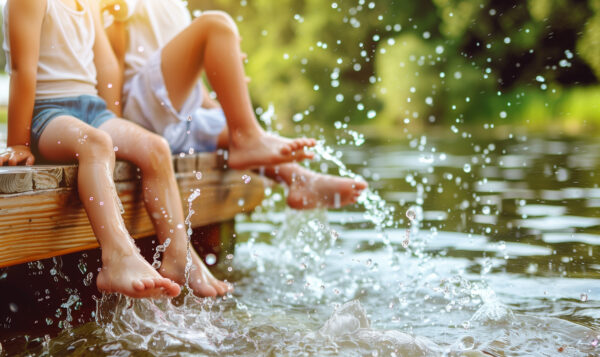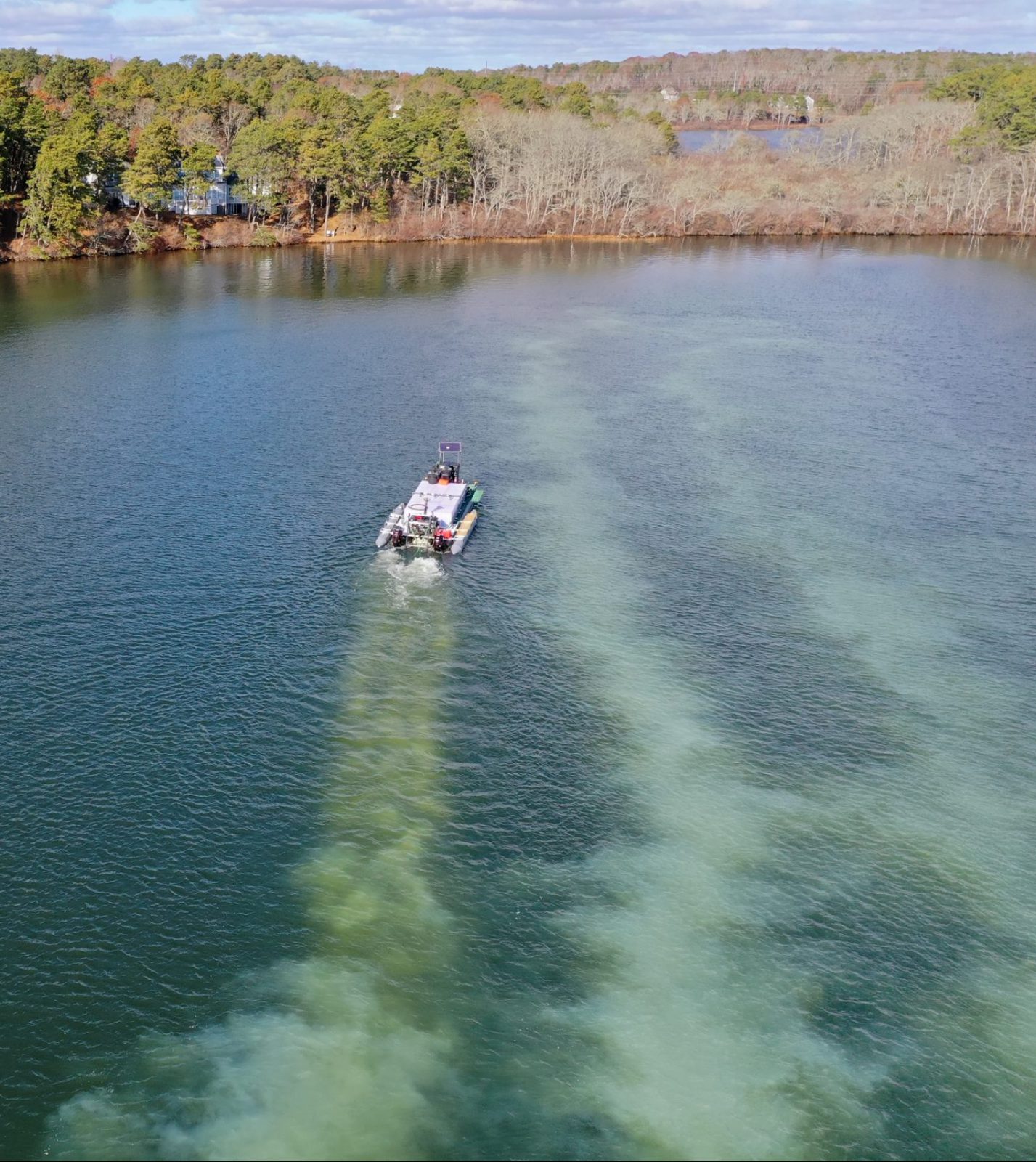
How Can There Be ‘Too Many Pond Nutrients’?
Lakes and ponds are home to many aquatic plant species that function as food sources for fish and animals and provide aesthetic beauty to onlookers. In order to maintain this kind of life in any pond, nutrients must be present. Among many types of nutrients found in a waterbody, the most significant nutrients are phosphorous and nitrogen. Despite the importance of these nutrients for aquatic health, an overabundance can cause serious issues. For the effective management of a community lake or stormwater facility, it is important to understand why a healthy balance of nutrients is critical to sustaining a waterbody, as well as ways to encourage this balance when the ecological health of the aquatic system is threatened.
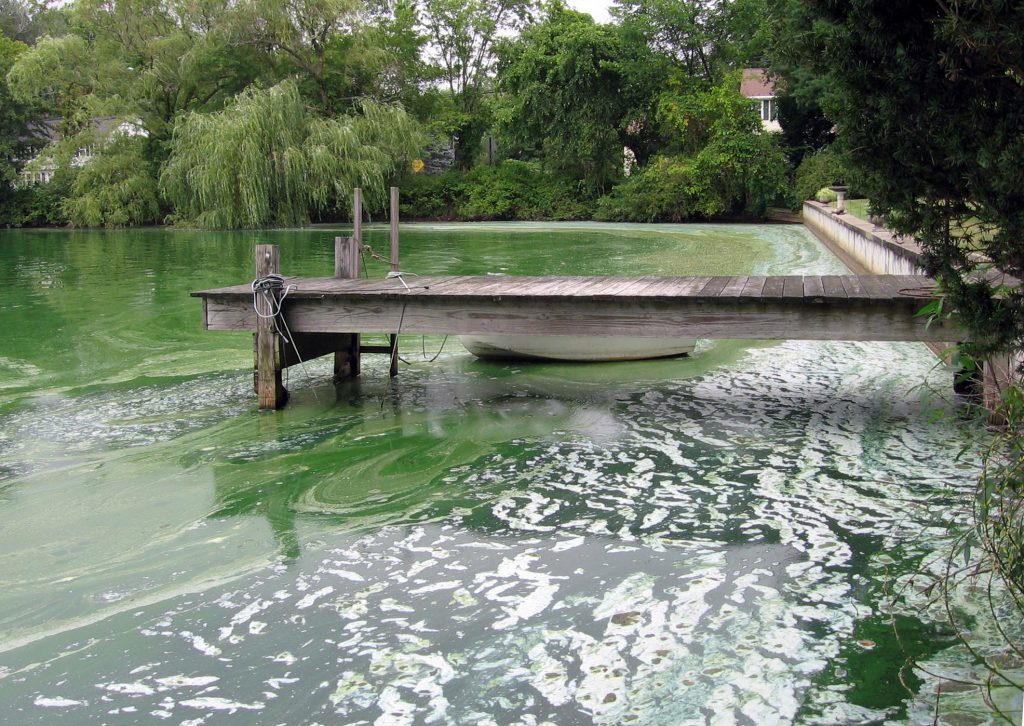
The Life of a Waterbody
The presence of plants, algae, and other aquatic life in a pond is proportional to the concentration of nutrients: the more nutrients present, the greater potential for plant and algae growth. During the early stages of a waterbody’s life, it has little to no nutrients present (oligotrophic). Due to the lack of nutrients, life in oligotrophic waterbodies is nonexistent or extremely scarce. Over time, lakes and ponds naturally accrue nutrients through outside sources and become moderately able to sustain life exist in balance (mesotrophic). Following a mesotrophic state, a pond can become overabundant in nutrients (eutrophic). The change in nutrient concentration is a natural process that eventually happens in all waterbodies. The rate at which it occurs is highly dependent on a number of factors, with nutrient loading become one of the most common causes.
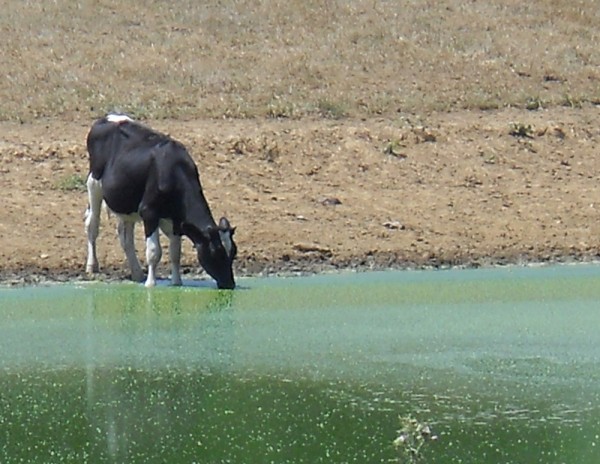
Common Nutrient Sources
Nutrients accumulate in ponds from outside sources of organic matter. When this organic matter decomposes, the nutrients that once composed the matter are released into the surrounding water. Runoff from industrial practices, agriculture, and residential communities are large contributors to excess nutrient loads in a waterbody. Waste from pets and lawn fertilizers often get washed into waterways, stimulating plant and algae growth. This extreme addition of nutrients accelerates the eutrophication process, prematurely aging one’s pond.
Other sources of nutrients are groundwater, streamflow, and surface water runoff. The composition of nutrients found in these water sources is largely dependent on surrounding geology, soil type, and land use.
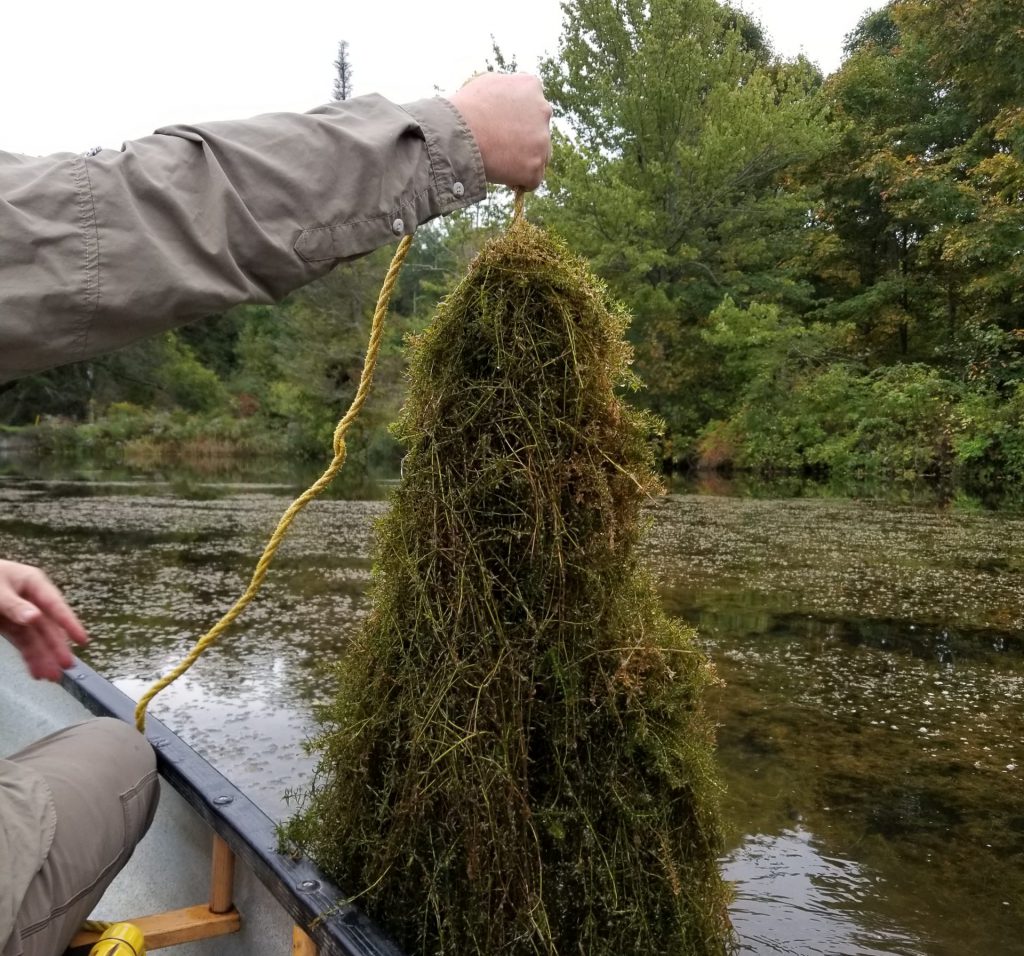
Algae & Weed Growth
Once waterbodies are deemed eutrophic, the high presence of nutrients can cause dangerous amounts of plant and algae growth. The high volumes of plants and algae can then trigger rapid decomposition events. When bacteria decompose plants and algae, large amounts of oxygen are consumed. When dissolved oxygen is absent from a pond, life cannot be supported, and fish kills may take place. The decrease in oxygen also leads to a higher volume of anaerobic bacteria. Anaerobic bacteria is very inefficient at breaking down muck and organic matter, allowing material to accumulate at the bottom of a lake or pond. On top of that, anaerobic bacteria release pungent odors.
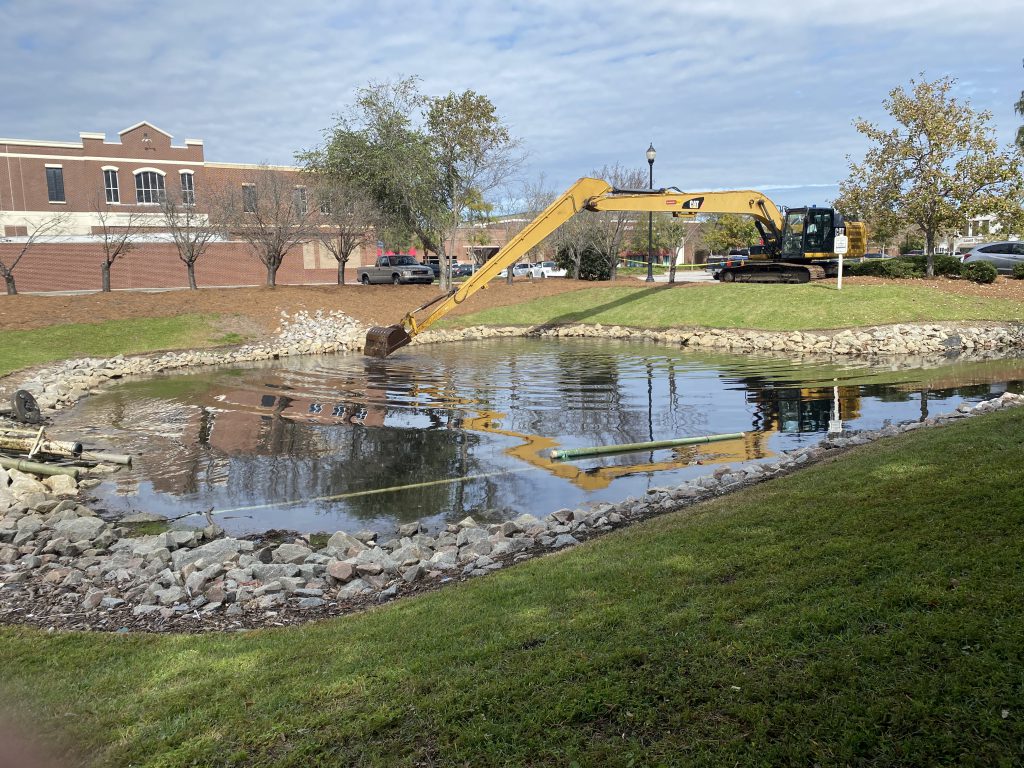
A Dangerous Cycle
As nutrients continue to accumulate in a waterbody naturally and through human influences, the eutrophication process is accelerated. Ponds will continuously acquire more nutrients, which results in more plant and algae growth, followed by decomposition, which results in the nutrients being recycled and available for more plant and algae growth. This continuous cycle only speeds up with time, resulting in high volumes of sediment accumulation. With accumulated sediment comes decreased water depths, increased water temperatures, and decreased dissolved oxygen concentrations. All of these factors contribute to even more plant and algae growth, ultimately leading to the pond to be filled in and ending its lifecycle unless costly dredging is utilized to restore the waterbody.
Sustainable Solutions
The application of algaecides and herbicides are short-term fixes to combat plant and algae blooms that result from inflated nutrient concentrations in a waterbody, but several other management practices can be implemented to exacerbate the effects.
Upland
- Safe land use practices are very important in preventing excess nutrients from entering a waterbody. By limiting the amount of fertilizer used on one’s property, you can greatly decrease the amount of nutrients running off into a pond.
- Trash, waste, grass clippings, pet droppings and other organic materials should be disposed of properly and away from the targeted waterbody to avoid nutrient loading.
- Cultivating a beneficial vegetative buffer of native plants around a waterbody is extremely beneficial in preventing excess nutrients from entering the aquatic ecosystem. The vegetation in the buffer will take up nutrients in surface water, as well as slow the flow of nutrient rich runoff.
In-Pond
- Several products can be used to strip excess nutrients out of a water column such as Alum, PhosLock, and Polyaluminum chloride. The application of these products will bind to nutrients in the water column, allowing them to settle out and become inactive, reducing the potential for plant and algae growth.
- The addition of a lake or pond aeration system can be very beneficial for fighting the effects of high nutrient concentration. It promotes the presence of aerobic bacteria, speeding the breakdown of muck and organic matter. Aeration also keeps dissolved oxygen levels up, reducing the risk of fish kills.
- After nutrient-rich sediment and organic matter have accumulated in a waterbody, healthy nutrient levels and water depth can be restored by removing the accumulated matter. Hydro-raking and dredging are two options used to remove excess matter.
No matter the size, location or water quality parameters of your waterbody, all aquatic ecosystems are susceptible to nutrient loading without proactive and sustainable management plans in place. Ensuring that your lake or pond contains healthy, balanced nutrient levels is one of the best strategies to lengthen its lifespan and get the most out of the waterbody for years to come.
SOLitude Lake Management is a nationwide environmental firm committed to providing sustainable solutions that improve water quality, enhance beauty, preserve natural resources and reduce our environmental footprint. SOLitude’s team of aquatic resource management professionals specializes in the development and execution of customized lake, pond, wetland and fisheries management programs that include water quality testing and restoration, nutrient remediation, algae and aquatic weed control, installation and maintenance of fountains and aeration systems, bathymetry, mechanical harvesting and hydro-raking, lake vegetation studies, biological assessments, habitat evaluations, and invasive species management. Services and educational resources are available to clients nationwide, including homeowners associations, multi-family and apartment communities, golf courses, commercial developments, ranches, private landowners, reservoirs, recreational and public lakes, municipalities, drinking water authorities, parks, and state and federal agencies. SOLitude Lake Management is a proud member of the Rentokil Steritech family of companies in North America.

